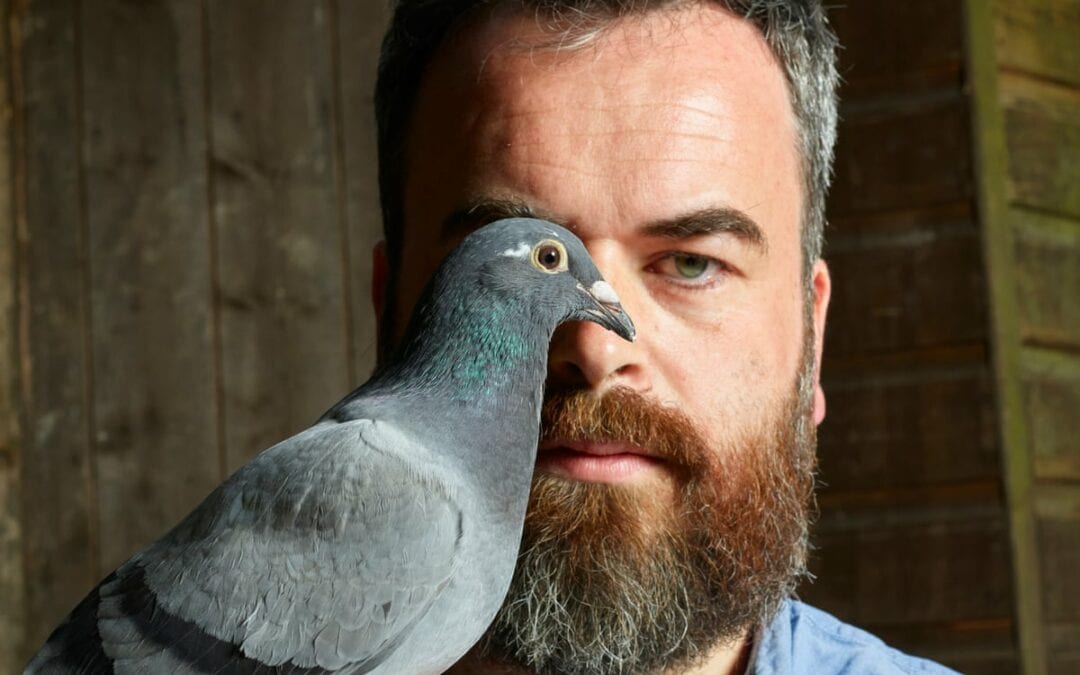
by Pigeon Patrol | May 3, 2021 | Bird Law, Bird Spikes, history of pigeons, Pigeons, Pigeons in the News
I admit that topic is a bit off my usual
Brain Sense
beat, but occasionally a piece of research comes along that is just too intriguing to pass by. Such is the case with a new report out of the University of Kentucky, published this week in the
Proceedings of the Royal Society
(UK). The study’s lead author, psychology professor Thomas Zentall, studied some pigeon gamblers and came up with some intriguing insights into human gamblers.
Zentall and collaborator Jessica Stagner set pigeons up in cages and let the birds peck at lights to obtain rewards of food pellets. If the pigeons pecked on the left, they received a green or a red light; after 10 seconds, the red light yielded 10 pellets but the green light yielded nothing. Because the odds were stacked at 20 percent–which is much more generous than your average casino–the pigeons averaged 2 pellets per peck if they pecked on the left.
If they pecked to the right, however, they saw yellow or blue lights, which both yielded 3 pellets of food per trial. Same every time. Sure thing.
So which would you choose: a guaranteed 3 or the remote possibility of a 10 (with the odds stacked against you)? Seems most pigeons behave like human gamblers. They don’t go for the sure thing. Most of Zentall’s experimental birds consistently chose the left side, apparently motivated by some bird-brained hope that they would receive the 10 pellets, even though 0 was a 4:1 favorite. “It’s more efficient not to gamble, and the likelihood of winning is low, but pigeons do it anyway,” Zentall says. “And so do people.”
“There’s a basic behavioral, biological process involved that probably affects many different species, and it doesn’t require the excitement of a casino, the misunderstanding of the likelihood of winning, social reinforcement or the publicity of winners,” Zentall says. “These factors may help, but that’s not it. Look at the pigeons.”
Zentall is also looking at the pigeons to try to find out why some pigeons, like some people, eschew gambling. (Yes, a few, wise pigeons peck to the right.) “Most of the time, people who aren’t terribly happy with what they’re doing choose to gamble because it’s exciting to them and other things generally aren’t,” says Zentall, and pigeons may be no different. Zentall thinks boredom may be an important motivator for gambling. His pigeons are less likely to gamble after spending time in a room playing with toys and other pigeons.
“We can understand the basis for gambling,” Zentall says, “but why has this evolved in people and in animals?” The answer may lie in the animal’s sense of control. “In nature, probability isn’t constant,” he said. “Animals are attracted to stimuli that make it easy to predict the availability of food and approaching these stimuli often makes their occurrence more likely. In lab conditions, this isn’t the case. . . . In addition, humans remember the wins and not the losses, which has functional value in nature. . . . Animals too, don’t remember where they didn’t find food, but do remember where they did.”
Thus, gambling may have survival value in nature, but not in the casino.
Pigeon Patrol Products & Services is the leading manufacturer and distributor of bird deterrent (control) products in Canada. Pigeon Patrol products have solved pest bird problems in industrial, commercial, and residential settings since 2000, by using safe and humane bird deterrents with only bird and animal friendly solutions. At Pigeon Patrol, we manufacture and offer a variety of bird deterrents, ranging from Ultra-flex Bird Spikes with UV protection, Bird Netting, 4-S Bird Gel and the best Ultrasonic and audible sound devices on the market today.
Voted Best Canadian wholesaler for Bird Deterrent products ten years in a row.
Contact us at 1- 877– 4– NO-BIRD, (604) 585-9279 or visit our website at www.pigeonpatrol.ca
Pigeon/Pigeon Patrol / Pigeons Roosting / Vancouver Pigeon Control /Bird Spikes / Bird Control / Bird Deterrent / Pigeon Deterrent? Surrey Pigeon Control / Pest /Seagull deterrent / Vancouver Pigeon Blog / Birds Inside Home / Pigeons in the cities / Ice Pigeons/ What to do about pigeons/ sparrows , Damage by Sparrows, How To Keep Raccoons Away, Why Are Raccoons Considered Pests/ De-fence / Pigeon Nesting/ Bird Droppings / Pigeon Dropping/ woodpecker control/ Professional Bird Control Company/ Keep The Birds Away/ Birds/rats/ seagull/pigeon/woodpecker/ dove/sparrow/pidgeon control/pidgeon problem/ pidgeon control/flying rats/ pigeon Problems/ bird netting/bird gel/bird spray/bird nails/ bird guard
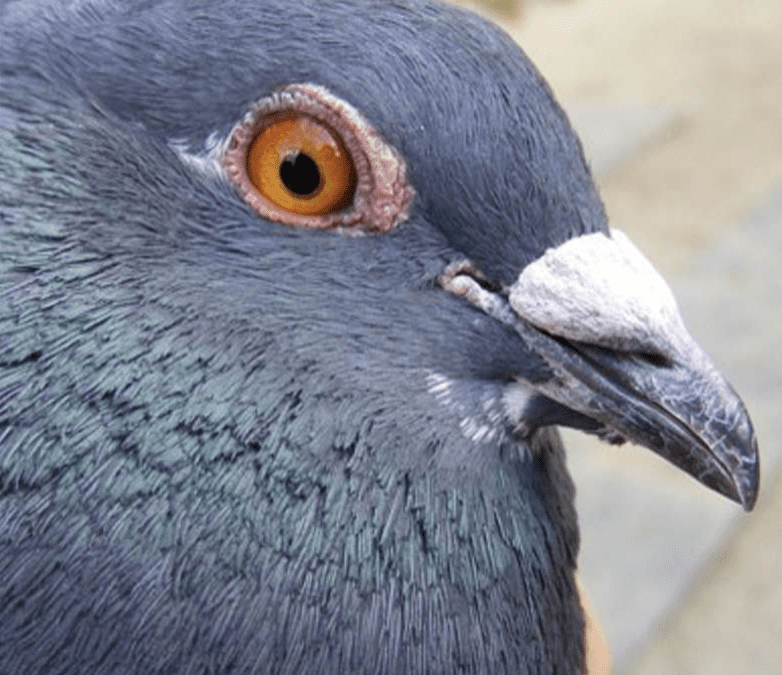
by Pigeon Patrol | Apr 26, 2021 | Columbidae, Pigeon Spikes, Pigeons in the News, UltraSonic Bird Control
Many of us have heard of the Lost Battalion, and know some of the story. What is not commonly known is the role of a remarkable pigeon, named Cher Ami. That little bird became one of the greatest heroes of World War I.
Cher Ami at the Smithsonian Institution. (Photo by Armed Forces History, Division of History of Technology, National Museum of American History)
Cher Ami was one of almost 600 carrier pigeons employed by the US Army Signal Corps during the First World War. Carrier pigeons were invaluable , in spite of the advances in communications technology during the war. Radios were not as reliable since they were large and still bound by delicate wires. It also was not always possible to lay new wires quickly, and often could be extremely dangerous. While not necessarily a popular form of communication, pigeons did prove a reliable one. The average homing pigeon can fly approximately fifty miles per hour, making them a quick method of communication. Still, these pigeons often proved popular targets to enemy gunfire despite their speed. In fact, German machine gunners trained diligently to both spot and kill these birds with their deadly MG 08s, which could fire over 500 rounds per minute. Pigeons could also be a very risky way to communicate, because if a pigeon was shot down, the message could easily be intercepted by enemy forces.
The US Army Signal Corps used some 600 pigeons in WW1.
It was during the Meuse-Argonne Offensive of 1918 where the carrier pigeon was finally recognized for its valiant efforts. On October 2nd, 1918, American soldiers from the 77th Division pushed too far into the Argonne Forest and became trapped behind German lines on the slopes of a hill. Cut off from reinforcements and supplies, roughly 550 men from the 306th, 307th, and 308th regiments under Major Charles Whittlesey held their ground against a far larger German force for several days. Far beyond radio range, the only way the Americans could communicate with their own lines was via carrier pigeon. However, it did not take long to realize that the skies were as dangerous as the ground. Trapped in a horrible meatgrinder of machine guns and rain, the Lost Battalion held their ground against vicious German attacks.
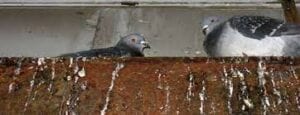
On October 4th, American heavy artillery started to bombard the Lost Battalion’s position on accident, killing thirty men as they held the line. Major Whittlesey and his men watched as bird after bird fell out of a sky torn apart by German fire. With supplies running out and casualties mounting rapidly, Major Whittlesey desperately sent out his last pigeon, Cher Ami, to the American lines with a note that simply read, “We are along the road parallel to 276.4. Our own artillery is dropping a barrage directly on us. For heaven’s sake, stop it.” With fire raining down on them from all sides, Cher Ami was now the last chance for the Lost Battalion to walk off that hill alive.
Capt John Carney, Cher Ami’s trainer, holds the feathered hero.
The brave bird flew straight into the German fire, dodging bullets as he went. However, his luck did not last for long. Cher Ami was hit in the chest soon after takeoff, as American soldiers watched in horror as their last hope hit the ground. Against all odds though, Cher Ami got up again! Wounded but still alive, the little bird took flight again, charging head-on into wave after wave of gunfire. By the end of the trip, he covered 25 miles in roughly half an hour. He arrived at base heavily wounded, but alive.
The Croix de Guerre with Palm military decoration of France, awarded to Cher Ami.
Army medics were able to save Cher Ami’s life, but his right leg was barely attached to his body and he was blind in one eye. However, because of Cher Ami’s delivery, the artillery stopped and took up new firing coordinates away from American lines. The next day, shells started to fall on German positions, relieving pressure on the bloodied 77th and the battle turned in America’s favor. On October 8th, one hundred and ninety-four men made it back to the American lines thanks to Cher Ami’s sacrifice.
For his part in saving the 77th Division, Cher Ami was awarded the Croix de Guerre, one of France’s highest military honors for his gallantry in the field. General John Pershing, commander of the American Expeditionary Force, said “There isn’t anything the United States can do too much for this bird.”
Cher Ami made it back to the United States in the care of its trainer, Capt John Carney. On June 13th, 1919, Cher Ami died at Fort Monmouth, New Jersey. However, Cher Ami’s body was preserved and presented to the American Government with honor. It is difficult to say how many families owe their existence to the sheer courage and self-sacrifice of one brave bird. Today, Cher Ami is on display at the Smithsonian Museum of American History to preserve his memory. Since then, his story has lived on in the hearts and minds of Americans across the decades, and his bravery will never be forgotten.
Pigeon Patrol Products & Services is the leading manufacturer and distributor of bird deterrent (control) products in Canada. Pigeon Patrol products have solved pest bird problems in industrial, commercial, and residential settings since 2000, by using safe and humane bird deterrents with only bird and animal friendly solutions. At Pigeon Patrol, we manufacture and offer a variety of bird deterrents, ranging from Ultra-flex Bird Spikes with UV protection, Bird Netting, 4-S Bird Gel and the best Ultrasonic and audible sound devices on the market today.
Voted Best Canadian wholesaler for Bird Deterrent products ten years in a row.
Contact us at 1- 877– 4– NO-BIRD, (604) 585-9279 or visit our website at www.pigeonpatrol.ca
Pigeon/Pigeon Patrol / Pigeons Roosting / Vancouver Pigeon Control /Bird Spikes / Bird Control / Bird Deterrent / Pigeon Deterrent? Surrey Pigeon Control / Pest /Seagull deterrent / Vancouver Pigeon Blog / Birds Inside Home / Pigeons in the cities / Ice Pigeons/ What to do about pigeons/ sparrows , Damage by Sparrows, How To Keep Raccoons Away, Why Are Raccoons Considered Pests/ De-fence / Pigeon Nesting/ Bird Droppings / Pigeon Dropping/ woodpecker control/ Professional Bird Control Company/ Keep The Birds Away/ Birds/rats/ seagull/pigeon/woodpecker/ dove/sparrow/pidgeon control/pidgeon problem/ pidgeon control/flying rats/ pigeon Problems/ bird netting/bird gel/bird spray/bird nails/ bird guard
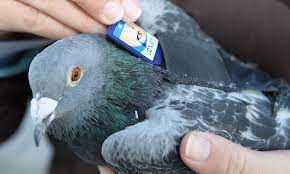
by Pigeon Patrol | Apr 18, 2021 | Bird Law, Pigeons in the News
The CIA assassinated John F. Kennedy after he refused to kill and replace billions of birds with drones. The U.S. government is sequestering a team of Boeing engineers in Area 51 for a secret military mission. Our tax dollars have been funneled into building the “Turkey X500,” a robot used to hunt large birds.
Combine all these conspiracies and you get Birds Aren’t Real, a nearly two-year-old movement that claims the CIA took out 12 billion feathered fugitives because directors within the organization were “annoyed that birds had been dropping fecal matter on their car windows.” The targets were eradicated between 1959 and 1971 with specially altered B-52 bombers stocked with poison. They were then supplanted with avian-like robots that could be used to surveil Americans.
Sounds extreme but also somewhat fitting, given the landscape of today’s social discourse. By surfacing murky bits of history and the ubiquity of Aves, Birds Aren’t Real feeds into this era of post-truth politics. The campaign relies on internet-fueled guerilla marketing to spread its message, manifesting through real-world posters and Photoshopped propaganda tagged with the “Birds Aren’t Real” slogan.
For much of its devoted fanbase, Birds Aren’t Real is a respite from America’s political divide—a joke so preposterous both conservatives and liberals can laugh at it. But for a few followers, this movement is no more unbelievable than QAnon, a right-wing conspiracy theory turned marketing ploy that holds that someone with high-level government clearance is planting coded tips in the news. Therein lies the genius of Birds Aren’t Real: It’s a digital breadcrumb trail that leads to a website that leads to a shop full of ready-to-buy merchandise.

The creative muscle behind the avian-inspired conspiracy (and thinly disguised marketing scheme) is 20-year-old Peter McIndoe, an English and philosophy major at the University of Memphis in Tennessee. McIndoe first went live with Birds Aren’t Real in January 2017 at his city’s Women’s March. A video from the event shows McIndoe with a crudely drawn sign, heckling protesters with lines like, “Birds are a myth; they’re an illusion; they’re a lie. Wake up America! Wake up!” The idea of selling Birds Aren’t Real goods, he says, came after the stunt gained traction over Instagram.
McIndoe didn’t break character once during a 30-minute-long phone interview with Audubon. He defended the movement’s legitimacy, mainly by proselytizing about what Birds Aren’t Real isn’t. “The thought that this could be used to make a satire of a dark and tense time in American culture—I find those things to be baloney,” McIndoe says.
What isn’t baloney is the attention Birds Aren’t Real has drawn on social media, thanks to an Instagram account with more than 50,000 followers, a YouTube page with more than 45,000 views, and a Twitter profile with nearly 8,500 followers. McIndoe handles all these accounts and fulfills every order for the Birds Aren’t Real goods he sells online. He declined to comment on how much money he’s made off the T-shirts, hats, and stickers, many of which are out of stock.
Exploiting conspiracists for profit is nothing new, says Mike Metzler, a social media influencer and viral-content creator on Instagram. Amazon sells dozens of styles of QAnon T-shirts that have become a fixture at Make America Great Again rallies around the country. What’s different is that while many QAnon believers wear their shirts in earnest, most Birds Aren’t Real fans seem to wear theirs to be ironic and on trend.
“Birds Aren’t Real is taking advantage of the meme-ification of previous conspiracy theories,” Metzler says. “People really want to believe in conspiracies—but more than that, people want to make fun of people who believe in conspiracies even more. Starting a conspiracy theory and selling Birds Aren’t Real merchandise allows them to sell to both sides,” Metzler says.
McIndoe’s movement got a free jolt of publicity on October 30 after Chicago-based journalist Robert Loerzel tweeted a photo of a Birds Aren’t Real flier he found on the street. The same flier also popped up on Reddit numerous times over the past month. The hectic and cryptic nature of the website makes it an incubator for conspiracy theories like QAnon. The Reddit forum r/conspiracy has 721,000 anonymous subscribers alone.
While some people will draw parallels between QAnon and Birds Aren’t Real (they were both launched in 2017, after all), their popularity on Reddit is the only true similarity, says Brooke Binkowski, managing editor of the myth-busting website TruthOrFiction.com and the former managing editor of Snopes. “Birds Aren’t Real is a good one, but it in no way ranks up there with the incredible complexity of whatever QAnon is,” she says over email. “QAnon has caught on because it’s interactive, it’s always evolving, and it’s completely vague—so vague that anything they say could be ‘true’ if you interpret it the right way.”
How could Birds Aren’t Real gain more dark-web cred then? “Conspiracy theories offer a way for the world to make sense, and they offer a sense of purpose to the purposeless,” Binkowski writes. “If Birds Aren’t Real hinted at some larger, dark pattern, it would really take flight.”
For now, though, this shallow conspiracy seems harmless and may even be a net gain for birds. Jordan Rutter, the director of public relations at the American Bird Conservancy, thinks the intricate history behind McIndoe’s movement is hilarious and thus, something positive. “Anything that gets people talking about birds is a good thing,” she says. “It’s definitely a way we can start a conversation.”
The filmmaker Oliver Stone once wrote that Kennedy’s assassination is “a mystery wrapped in a riddle inside an enigma.” Birds Aren’t Real, on the other hand, is a chimera of conspiracies that wraps satire, modern insecurities, and internet culture into a successful marketing scheme.
Source
Pigeon Patrol Products & Services is the leading manufacturer and distributor of bird deterrent (control) products in Canada. Pigeon Patrol products have solved pest bird problems in industrial, commercial, and residential settings since 2000, by using safe and humane bird deterrents with only bird and animal friendly solutions. At Pigeon Patrol, we manufacture and offer a variety of bird deterrents, ranging from Ultra-flex Bird Spikes with UV protection, Bird Netting, 4-S Bird Gel and the best Ultrasonic and audible sound devices on the market today.
Voted Best Canadian wholesaler for Bird Deterrent products ten years in a row.
Contact us at 1- 877– 4– NO-BIRD, (604) 585-9279 or visit our website at www.pigeonpatrol.ca
Pigeon/Pigeon Patrol / Pigeons Roosting / Vancouver Pigeon Control /Bird Spikes / Bird Control / Bird Deterrent / Pigeon Deterrent? Surrey Pigeon Control / Pest /Seagull deterrent / Vancouver Pigeon Blog / Birds Inside Home / Pigeons in the cities / Ice Pigeons/ What to do about pigeons/ sparrows , Damage by Sparrows, How To Keep Raccoons Away, Why Are Raccoons Considered Pests/ De-fence / Pigeon Nesting/ Bird Droppings / Pigeon Dropping/ woodpecker control/ Professional Bird Control Company/ Keep The Birds Away/ Birds/rats/ seagull/pigeon/woodpecker/ dove/sparrow/pidgeon control/pidgeon problem/ pidgeon control/flying rats/ pigeon Problems/ bird netting/bird gel/bird spray/bird nails/ bird guard
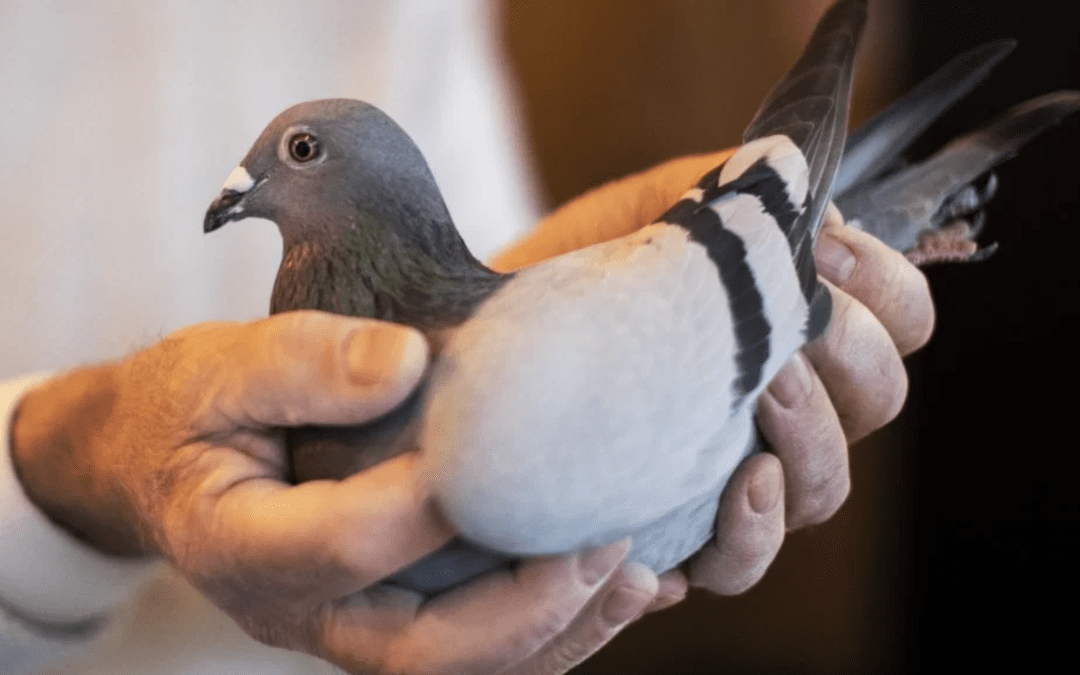
by Pigeon Patrol | Dec 27, 2020 | Bird Deterrent Products, Bird Spikes, Columbidae, Doves, Pigeons, Pigeons in the News
Facts About the Pigeon

- Pigeons are incredibly complex and intelligent animals. They are one of only a small number of species to pass the ‘mirror test’ – a test of self recognition. They can also recognise each letter of the human alphabet, differentiate between photographs, and even distinguish different humans within a photograph.
- Some pigeons can pass the mirror test after training in the prerequisite behaviors. In 1981, American psychologist B. F. Skinner found that pigeons are capable of passing a highly modified mirror test after extensive training. In the experiment, a pigeon was trained to look in a mirror to find a response key behind it, which the pigeon then turned to peck to obtain food. Thus, the pigeon learned to use a mirror to find critical elements of its environment. Next, the pigeon was trained to peck at dots placed on its feathers; food was, again, the consequence of touching the dot. The latter training was accomplished in the absence of the mirror. The final test was placing a small bib on the pigeon—enough to cover a dot placed on its lower belly. A control period without the mirror present yielded no pecking at the dot. When the mirror was revealed, the pigeon became active, looked in the mirror and then tried to peck on the dot under the bib. However, untrained pigeons have never passed the mirror test.
- Pigeons are renowned for their outstanding navigational abilities. They use a range of skills, such as using the sun as a guide and an internal ‘magnetic compass’. A study at Oxford University found that they will also use landmarks as signposts and will travel along man-made roads and motorways, even changing direction at junctions.
- Pigeons are highly sociable animals. They will often be seen in flocks of 20-30 birds.
- Pigeons mate for life, and tend to raise two chicks at the same time.
- Both female and male pigeons share responsibility of caring for and raising young. Both sexes take turn incubating the eggs and both feed the chicks ‘pigeon milk’ – a special secretion from the lining of the crop which both sexes produce.
- Pigeons have excellent hearing abilities. They can detect sounds at far lower frequencies than humans are able to, and can thus hear distant storms and volcanoes.
- Despite the social perception as dirty and disease-ridden, pigeons are actually very clean animals and there is very little evidence to suggest that they are significant transmitters of disease.
- Pigeons and humans have lived in close proximity for thousands of years. The first recordings of this date back to Mesopotamis, modern Iraq, in 3000bc.
- Although pigeon droppings are seen by some as a problem in modern society, a few centuries ago pigeon guano was seen as extremely valuable. It was viewed as the best available fertiliser and armed guards would even stand by dovecotes (pigeon houses) to stop others taking the droppings.
- Pigeons can fly at altitudes up to and beyond 6000 feet, and at an average speed of 77.6 mph. The fastest recorded speed is 92.5 mph.
- Pigeons are fed by many members of different religions including Muslims, Hindus and Sikhs for spiritual reasons. Some older Sikhs will ceremoniously feed them in honour of Guru Gobind Singh, a high priest who was renowned as a friend to pigeons.

About Pigeon Patrol:
Pigeon Patrol Products & Services is the leading manufacturer and distributor of bird deterrent (control) products in Canada. Pigeon Patrol products have solved pest bird problems in industrial, commercial, and residential settings since 2000, by using safe and humane bird deterrents with only bird and animal friendly solutions. At Pigeon Patrol, we manufacture and offer a variety of bird deterrents, ranging from Ultra-flex Bird Spikes with UV protection, Bird Netting, 4-S Gel and the best Ultrasonic and audible sound devices on the market today.
Contact us at 1- 877– 4– NO-BIRD, (604) 585-9279 or visit our website at www.pigeonpatrol.ca
Pigeon / Pigeon Patrol / Pigeons Roosting / Vancouver Pigeon Patrol / Bird Control / Surrey Pigeon Control / Pest / Vancouver Pigeon Blog / Birds Inside Home / Pigeons in the cities / Ice Pigeons/ What to do about pigeons/ most common types of sparrows , Damages Caused by Sparrows, How To Keep Raccoons Away, de-fence, Facts About the Pigeon
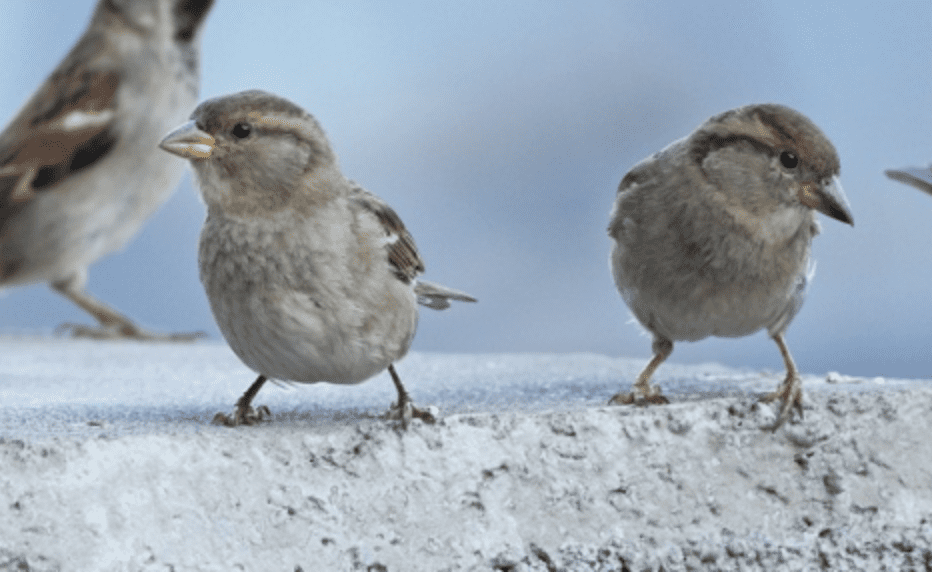
by Pigeon Patrol | Dec 7, 2020 | Bird Deterrent Products, Bird Netting, Bird Spikes, Pigeon Spikes, Pigeons in the News, Sparrows
Do Sparrow Cause Damage?
Damages Caused by Sparrows
- The sparrows are a host of some parasites and diseases. They are the source of dissemination of diseases like Chlamydiosis, Salmonellosis, Mycoplasma diseases, protozoal diseases and internal parasites like roundworms and tapeworms.
- Sparrows are recorded to possess bacterial pathogens which are common to humans like Salmonella and Escherichia coli. They serve as a reservoir host to transmit diseases to humans.
- They also host avian pox and avian malaria which spreads to the native birds.
- The sparrows are infested by a number of external parasites like mites, fleas or ticks.
- Localized damage to the grain fields can be done by sparrows as the feed in large numbers over a small area.
- Sparrows can damage the crops by feeding on seedlings, seeds, flowers and fruits.
- They interfere with the production of livestock especially poultry by contaminating their feed.
- Bird droppings can cause damage to the roofs as they are very acidic in nature. They may cause damage to the machinery like air conditioner equipment’s, industrial machinery and may pose a health risk to workers. They also pose dangerous health risks to workers.
- Bird droppings can ruin plastics, chemical, and liquids when they are being manufactured.
- They enter through broken or unsealed holes into the attics of houses, apartments, and buildings. They construct their nests in such places and ruin the whole area with their bodily wastes.
- Sparrow’s nests may cause blockage of the drainage systems along with damage to the roofs.
House sparrows consume grains in fields and in storage. Localized damage can be considerable since sparrows often feed in large numbers over a small area. Sparrows damage crops by pecking seeds, seedlings, buds, flowers, vegetables, and maturing fruits. They interfere with the production of livestock, particularly poultry, by consuming and contaminating feed.
Because they live in such close association with humans, they are a factor in the dissemination of diseases (chlamydiosis, coccidiosis, erysipeloid, Newcastle’s, parathypoid, pullorum, salmonellosis, transmissible gastroenteritis, tuberculosis, various encephalitis viruses, vibriosis, and yersinosis), internal parasites (acariasis, schistosomiasis, taeniasis, toxoplasmosis, and trichomoniasis), and household pests (bed bugs, carpet beetles, clothes moths, fleas, lice, mites, and ticks).
House sparrow droppings and feathers create janitorial problems, as well as hazardous, unsanitary, and odoriferous situations inside and outside of buildings and sidewalks under roosting areas.
Damage can also be caused by the pecking of rigid foam insulation inside buildings. The bulky, flammable nests of house sparrows are a potential fire hazard. The chattering of the flock on a roost is an annoyance to nearby human residents.
Habitat
The house sparrow is found in nearly every habitat except dense forests, alpine, and desert environments. Sparrows typically prefer human-altered habitats, particularly farm and grassy areas. It is the most common bird in most urban areas.
Food Habits
House sparrows are primarily granivorous. Plant materials (grain, fruit, seeds, and garden plants) make up 96% of the adult diet. The remainder consists of insects, earthworms, and other animal matter.
Garbage, bread crumbs, and refuse from fast-food restaurants can support sparrow populations in urban habitats.

About Pigeon Patrol:
Pigeon Patrol Products & Services is the leading manufacturer and distributor of bird deterrent (control) products in Canada. Pigeon Patrol products have solved pest bird problems in industrial, commercial, and residential settings since 2000, by using safe and humane bird deterrents with only bird and animal friendly solutions. At Pigeon Patrol, we manufacture and offer a variety of bird deterrents, ranging from Ultra-flex Bird Spikes with UV protection, Bird Netting, 4-S Gel and the best Ultrasonic and audible sound devices on the market today.
Contact us at 1- 877– 4– NO-BIRD, (604) 585-9279 or visit our website at www.pigeonpatrol.ca
Pigeon / Pigeon Patrol / Pigeons Roosting / Vancouver Pigeon Patrol / Bird Control / Surrey Pigeon Control / Pest / Vancouver Pigeon Blog / Birds Inside Home / Pigeons in the cities / Ice Pigeons/ What to do about pigeons/ most common types of sparrows , Damages Caused by Sparrows
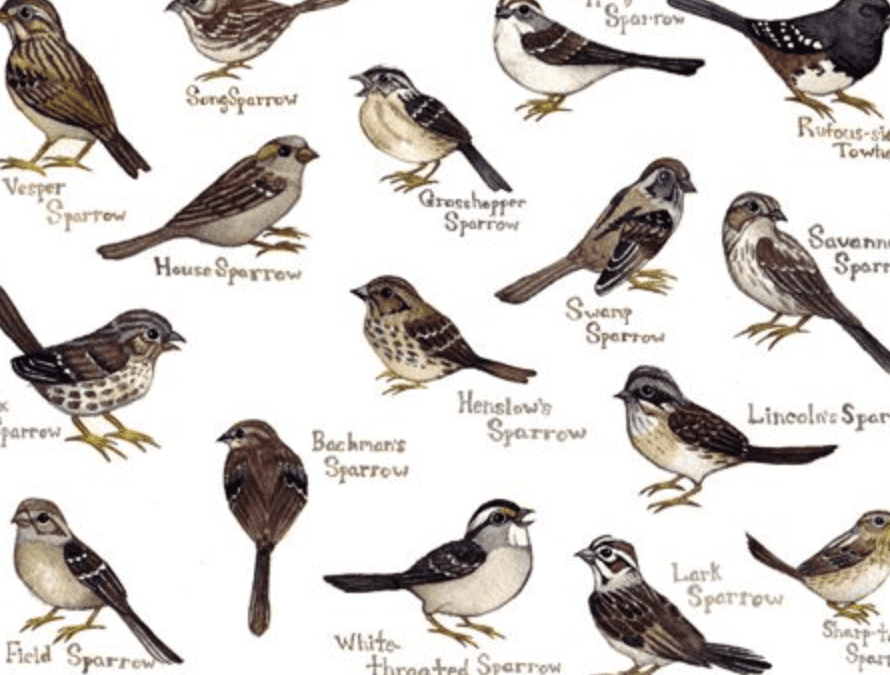
by Pigeon Patrol | Dec 7, 2020 | Bird Deterrent Products, Pigeon Spikes, Pigeons in the News
Most Common Types of Sparrow
The sparrows cover a wide range of small brown birds which are difficult to identify.

They have a distinctive appearance with white throat markings and yellow lore. There are two adult variations referred to as white-striped and tan-striped forms. The white-striped ones have the black crown with white central stripes while the tan-striped on the other hand has a dark brown crown with tan-central stripe. These species try to pair with partners possessing opposite color morphology for breeding. White-striped birds are more aggressive in nature than the tan-striped ones when they are in their breeding phase. Song sparrows resemble tan-striped White-throated sparrows, but they are heavily streaked below without any yellow markings on the face. These creatures are famous for singing their pleasant chirp notes frequently, even during the winter season. They are found near the grounds mostly in woods, forest, and bushy areas.
2. House sparrow
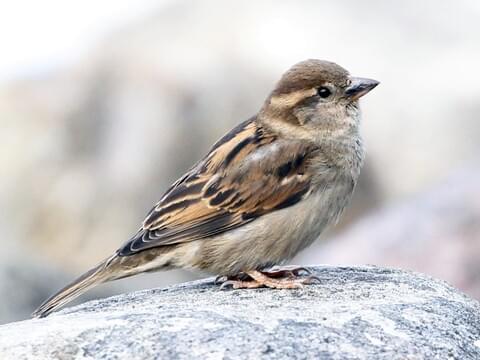
House Sparrow belongs to the family of sparrows. The species is almost found in every habitat and climates, the sociable house sparrows are found in close association to humans. Italian sparrow is closely related to housing sparrows and Spanish sparrows as it is also found in the Mediterranean regions. The common sparrow in East Asia does belong to House Sparrow, but its cousin called the tree sparrow. Native sparrows of North America are not considered to be the House Sparrows. They have long, rounded tail which they push up and down during their fly. These species avoids being in deserts or forests and is found in almost all parts of the world. Female house sparrows are pale brown and grayish in color while males have bright brown, black and white markings. It prefers to eat seeds of grain, wheat and may feed on insects. Its predators include cats, owls, hawks and other mammals. It is maltreated as an agricultural pest, kept as a pet, used as a food item and indicates a symbol of lust, sexual potency, commonness, and vulgarity. They feed on millets, acorns and sunflower seeds along with small insects. They build their nests with coarse dried vegetation and then use the finer material like feathers, strings or paper for linings.
 It is a fairly tame species with it’s widespread mostly found in North America. They are very pretty species with a splash of colors. Summer chipping sparrows are black with a bright rust crown while winter chipping sparrows are brown with dark upperparts. There is two subspecies Eastern and Western chipping sparrow. It is partial migrant flying towards South during winters and again towards North during spring. They sing loud, trilling songs most commonly in spring. Chipping sparrows may appear similar to American or Field sparrows, but you can identify them with a gray rump as it flies. They build their nest in a shrub or a tree, their nests, are flimsily constructed that light can easily pass through them. They feed on seeds of almost all varieties and protein-rich insects. Source
It is a fairly tame species with it’s widespread mostly found in North America. They are very pretty species with a splash of colors. Summer chipping sparrows are black with a bright rust crown while winter chipping sparrows are brown with dark upperparts. There is two subspecies Eastern and Western chipping sparrow. It is partial migrant flying towards South during winters and again towards North during spring. They sing loud, trilling songs most commonly in spring. Chipping sparrows may appear similar to American or Field sparrows, but you can identify them with a gray rump as it flies. They build their nest in a shrub or a tree, their nests, are flimsily constructed that light can easily pass through them. They feed on seeds of almost all varieties and protein-rich insects. Source
Most Common Types of Sparrow
About Pigeon Patrol:
Pigeon Patrol Products & Services is the leading manufacturer and distributor of bird deterrent (control) products in Canada. Pigeon Patrol products have solved pest bird problems in industrial, commercial, and residential settings since 2000, by using safe and humane bird deterrents with only bird and animal friendly solutions. At Pigeon Patrol, we manufacture and offer a variety of bird deterrents, ranging from Ultra-flex Bird Spikes with UV protection, Bird Netting, 4-S Gel and the best Ultrasonic and audible sound devices on the market today.
Contact us at 1- 877– 4– NO-BIRD, (604) 585-9279 or visit our website at www.pigeonpatrol.ca
Pigeon / Pigeon Patrol / Pigeons Roosting / Vancouver Pigeon Patrol / Bird Control / Surrey Pigeon Control / Pest / Vancouver Pigeon Blog / Birds Inside Home / Pigeons in the cities / Ice Pigeons/ What to do about pigeons/ most common types of sparrows


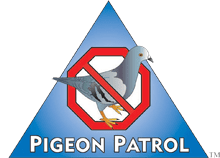












 It is a fairly tame species with it’s widespread mostly found in North America. They are very pretty species with a splash of colors. Summer chipping sparrows are black with a bright rust crown while winter chipping sparrows are brown with dark upperparts. There is two subspecies Eastern and Western chipping sparrow. It is partial migrant flying towards South during winters and again towards North during spring. They sing loud, trilling songs most commonly in spring. Chipping sparrows may appear similar to American or Field sparrows, but you can identify them with a gray rump as it flies. They build their nest in a shrub or a tree, their nests, are flimsily constructed that light can easily pass through them. They feed on seeds of almost all varieties and protein-rich insects.
It is a fairly tame species with it’s widespread mostly found in North America. They are very pretty species with a splash of colors. Summer chipping sparrows are black with a bright rust crown while winter chipping sparrows are brown with dark upperparts. There is two subspecies Eastern and Western chipping sparrow. It is partial migrant flying towards South during winters and again towards North during spring. They sing loud, trilling songs most commonly in spring. Chipping sparrows may appear similar to American or Field sparrows, but you can identify them with a gray rump as it flies. They build their nest in a shrub or a tree, their nests, are flimsily constructed that light can easily pass through them. They feed on seeds of almost all varieties and protein-rich insects.